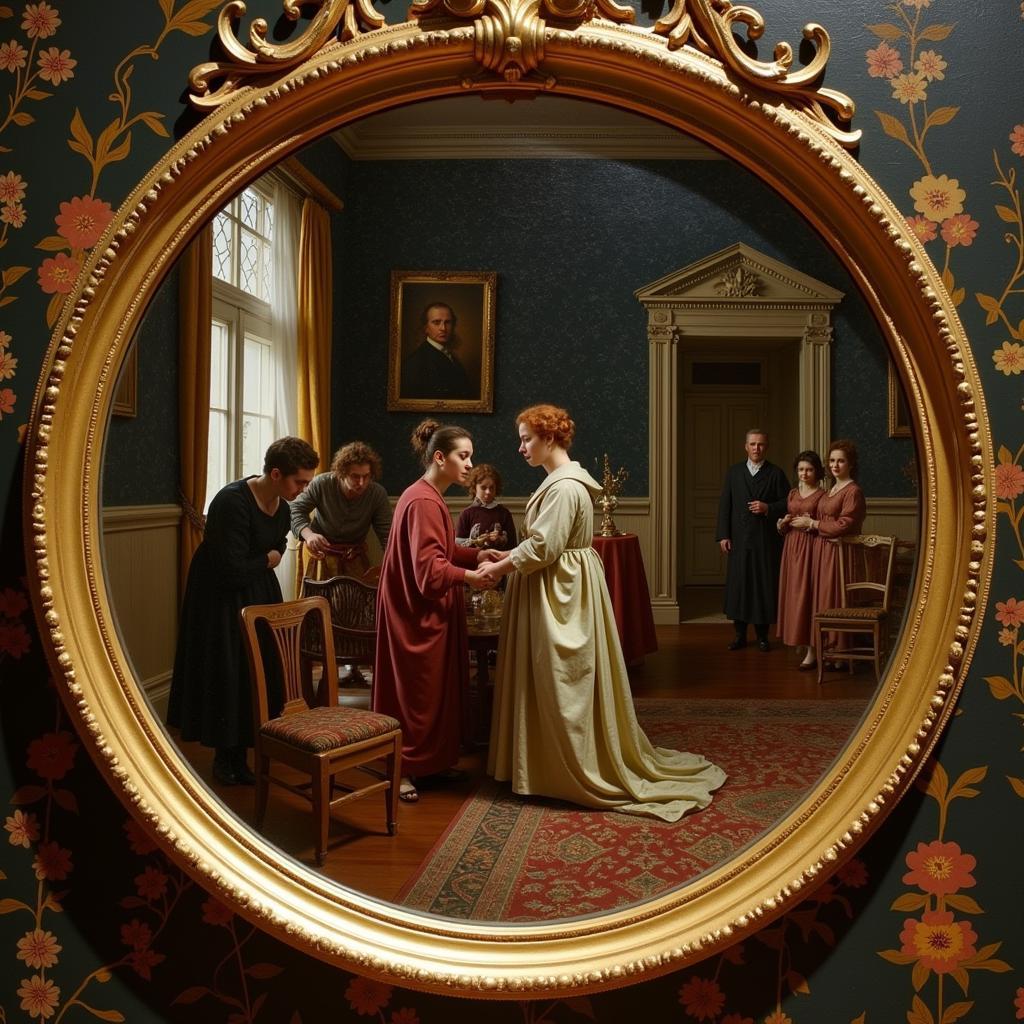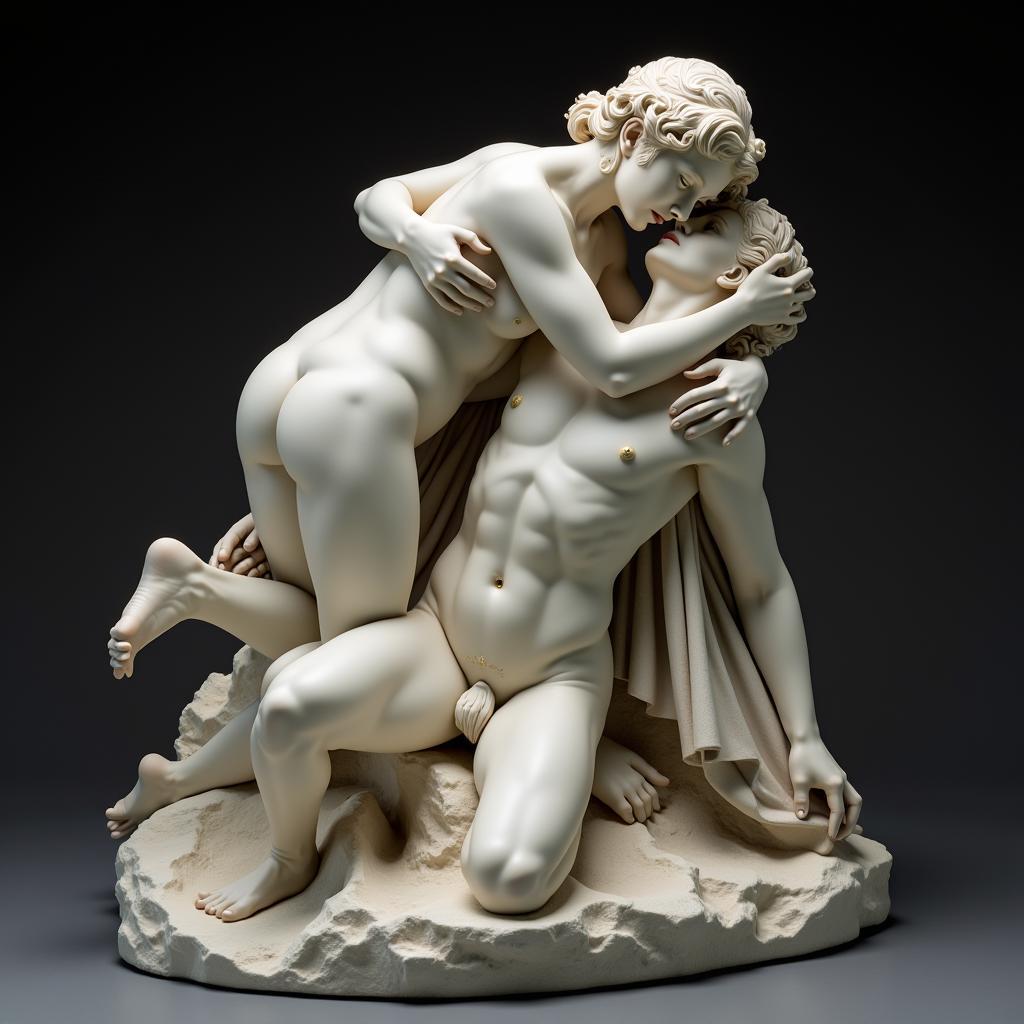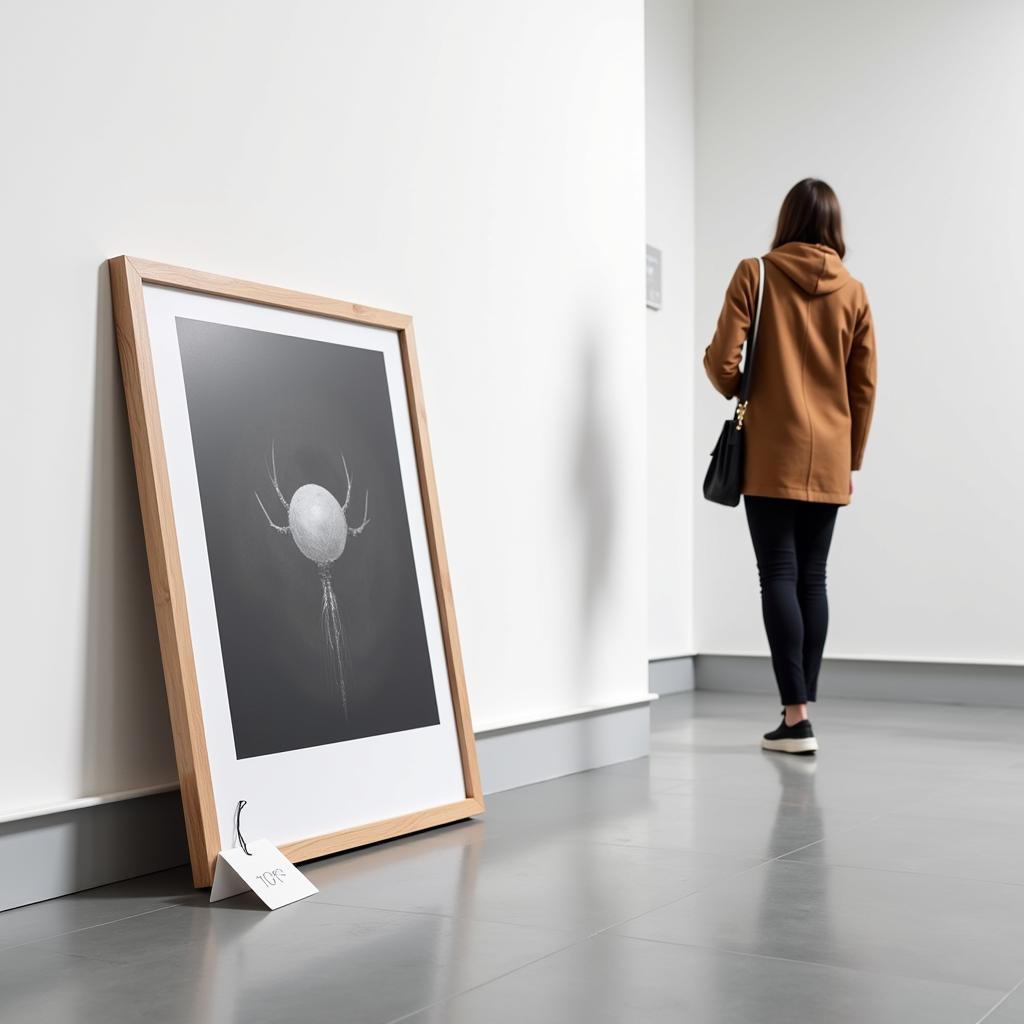Exploring the Creative World of Convex Mirror Art
Convex Mirror Art offers a unique and fascinating perspective, distorting reality in a way that can be both beautiful and thought-provoking. From the classic use in the Arnolfini Portrait to contemporary digital art, the curved reflective surface of a convex mirror has captivated artists for centuries. This article delves into the history, techniques, and creative possibilities of convex mirror art, inspiring you to explore this captivating medium.
A Journey Through the History of Convex Mirrors in Art
Convex mirrors have played a significant role in art history, often symbolizing wealth, status, and a wider view of the world. One of the most famous examples is Jan van Eyck’s Arnolfini Portrait, where the convex mirror reflects the entire scene, including the artist himself, adding a layer of complexity and intrigue to the painting. Beyond this iconic piece, convex mirrors appeared in numerous still lifes and interior scenes during the Renaissance, reflecting the opulent surroundings and demonstrating the artist’s skill in capturing intricate details. This tradition continued through various art movements, with artists finding new ways to incorporate the distorted reflections into their work.
 Convex Mirror in Renaissance Painting
Convex Mirror in Renaissance Painting
The use of convex mirrors in art wasn’t limited to European traditions. In Eastern art, particularly in Chinese and Japanese cultures, convex mirrors were often incorporated into decorative objects and symbolic representations, adding a mystical and philosophical dimension.
Understanding the Distinctive Effects of Convex Mirrors
What sets convex mirrors apart is their ability to create a wide-angle view, capturing a larger scene than a flat mirror. This unique perspective leads to characteristic distortions, where objects appear smaller and further away than they actually are. These distortions, however, are not random; they follow optical principles, creating a unique visual language that artists can manipulate and exploit to achieve specific effects.
 Distortion Effects of Convex Mirrors
Distortion Effects of Convex Mirrors
The curvature of the mirror is key to the degree of distortion. A more pronounced curve results in a wider field of view and greater distortion, while a shallower curve produces a subtler effect. Artists can choose the curvature that best suits their artistic vision, using the distortion to emphasize certain elements, create a sense of movement, or offer a unique perspective on the subject.
Convex Mirror Art in the Digital Age
Today, digital artists are exploring the potential of convex mirrors in exciting new ways. Software programs allow for the simulation of convex reflections, giving artists unprecedented control over the distortion and perspective. This opens up a world of creative possibilities, from manipulating photographs and videos to creating entirely new digital artworks. Digital tools allow for precise control over the curvature, reflection, and distortion, enabling artists to push the boundaries of traditional convex mirror aesthetics.
How to Incorporate Convex Mirrors into Your Own Art
Whether you’re a painter, photographer, or digital artist, incorporating convex mirrors into your work can add a fascinating dimension. Here are some ideas to get you started:
- Photography: Experiment with placing a convex mirror in your scene, capturing its reflection along with the surrounding environment.
- Painting: Study the works of masters who used convex mirrors and try to replicate the effect in your own paintings.
- Digital Art: Use software tools to simulate convex reflections and create unique digital compositions.
“Convex mirrors offer a window into a distorted reality, allowing artists to challenge perceptions and explore the boundaries of visual representation,” says renowned digital artist, Anya Sharma.
“The beauty of convex mirror art lies in its ability to transform the ordinary into the extraordinary, revealing hidden perspectives and inviting viewers to see the world anew,” adds art historian, Dr. James Miller.
Conclusion
Convex mirror art offers a captivating blend of reality and distortion. From its historical significance to its modern applications in digital art, the convex mirror continues to inspire artists to explore new creative frontiers. So, embrace the curve, experiment with reflections, and discover the unique possibilities of convex mirror art.
FAQ
-
What is a convex mirror?
A convex mirror is a curved mirror with a reflecting surface that bulges outwards. -
How does a convex mirror distort images?
A convex mirror makes objects appear smaller and further away than they actually are, creating a wide-angle view. -
What is the significance of convex mirrors in art history?
Convex mirrors have been used in art to symbolize wealth, status, and a broader perspective, often appearing in Renaissance paintings. -
How can I incorporate convex mirrors into my photography?
Place a convex mirror in your scene and capture its reflection along with the surroundings. -
What software can I use to create digital convex mirror art?
Many graphic design and photo editing software programs offer tools to simulate convex reflections. -
Where can I learn more about the Arnolfini Portrait ap art history?
You can learn more about the Arnolfini Portrait at arnolfini portrait ap art history. -
Are there any online tutorials for creating convex mirror art?
Yes, numerous online resources and tutorials offer guidance on incorporating convex mirrors into various art forms.
Common Scenarios and Questions:
-
Scenario: You want to create a surreal landscape using digital art.
-
Question: How can I use convex mirror effects to enhance the surrealism of my digital landscape?
-
Scenario: You’re a photographer interested in capturing unique portraits.
-
Question: How can I use a physical convex mirror to add an interesting element to my portrait photography?
Further Exploration:
For more information on related topics, explore these resources on our website:
Need Help? Contact Us!
For assistance with your creative endeavors, please don’t hesitate to contact us. Call us at 02462573573, email us at [email protected], or visit us at Savico Megamall, 7-9 Đ. Nguyễn Văn Linh, Gia Thụy, Long Biên, Hà Nội 10000, Việt Nam. Our customer support team is available 24/7.



